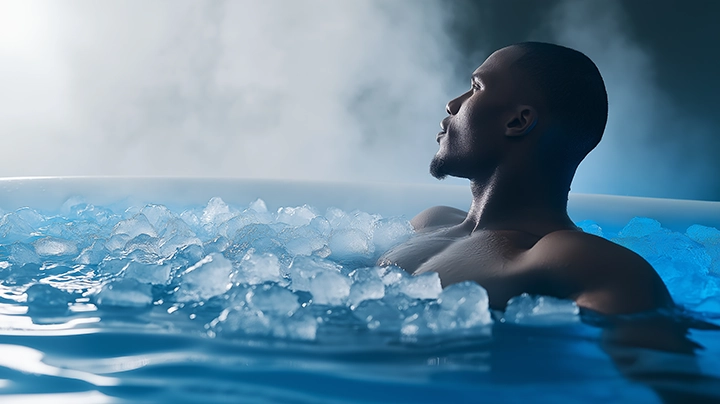The Cold Truth: Unlocking Athletic Performance with Ice Baths and Cold Plunges

Welcome to the fascinating world of water immersion recovery techniques for athletes! In this article, we'll dive deep into the science behind these popular recovery methods and explore how they can potentially enhance athletic performance. As an athlete or fitness enthusiast, you've likely heard of ice baths or cold plunges, but there's much more to water immersion recovery than just chilling out. Let's explore the various techniques, their effects, and how you can incorporate them into your training regimen.
The Four Water Immersion Techniques
Water immersion recovery can be categorized into four main techniques based on water temperature:
- Cold Water Immersion (CWI): ≤20°C (68°F)
- Hot Water Immersion (HWI): ≥36°C (96.8°F)
- Contrast Water Therapy (CWT): Alternating between CWI and HWI
- Thermoneutral Water Immersion (TWI): >20°C to <36°C (68°F to 96.8°F)
Each of these techniques has unique effects on the body and potential benefits for recovery. Let's break them down one by one.
Cold Water Immersion: The Ice Bath Champion
Cold water immersion, often referred to as an "ice bath" or "cold plunge," has gained significant popularity among athletes in recent years. Research has shown that CWI can enhance recovery of performance in various sports.
Optimal Protocol:
- Temperature: 10-15°C (50-59°F)
- Duration: 5-15 minutes
The effectiveness of CWI may depend on factors such as water temperature and the time between immersion and the next exercise bout. Many athletes swear by the invigorating effects of a cold plunge, reporting reduced muscle soreness and improved recovery.
Hot Water Immersion: Mixed Results
While hot tubs and saunas are popular for relaxation, the research on hot water immersion for performance recovery is less clear-cut. Studies examining post-exercise HWI have reported conflicting findings, making it difficult to draw definitive conclusions about its effectiveness.
Contrast Water Therapy: Hot and Cold Combo
Contrast water therapy involves alternating between hot and cold water immersion. This technique has shown promise in enhancing performance recovery under certain conditions.
Optimal Protocol:
- Equal time in hot and cold water
- Short individual immersion durations (~1 minute each)
- Total immersion time up to 15 minutes
It's worth noting that some studies reporting no benefits from CWT had methodological issues, such as not performing full-body immersion or using showers instead of pools.
Thermoneutral Water Immersion: The Middle Ground
TWI has been used both as a control in studies and as an intervention itself. However, due to conflicting findings, it's uncertain whether TWI significantly improves recovery of subsequent exercise performance.
Comparing Effectiveness
While more research is needed, current evidence suggests that both CWI and CWT are likely to assist in exercise performance recovery more effectively than HWI and TWI. However, it's still unclear which technique reigns supreme.
Practical Recommendations for Athletes
-
Experiment with different techniques: Every athlete's body responds differently, so try various methods to find what works best for you.
-
Consider your training schedule: The timing of water immersion relative to your next workout can impact its effectiveness.
-
Use proper equipment: Invest in a quality cold plunge tub or portable ice bath for consistent recovery sessions.
-
Monitor your response: Keep track of how you feel after each session and adjust accordingly.
-
Combine with other recovery methods: Water immersion can be part of a comprehensive recovery strategy that includes proper nutrition, sleep, and other techniques.
The Future of Water Immersion Recovery
As the popularity of water immersion recovery techniques continues to grow, so does the body of research surrounding them. While we've made significant strides in understanding these methods, there's still much to learn about optimizing protocols for different sports, individual athletes, and specific training phases.
Whether you're a professional athlete, weekend warrior, or fitness enthusiast, incorporating water immersion recovery into your routine could potentially enhance your performance and reduce recovery time. As with any new training method, it's essential to listen to your body and consult with a sports medicine professional or coach to develop a safe and effective recovery strategy.
So, are you ready to take the plunge into the world of water immersion recovery? Your muscles might just thank you for it!
References: